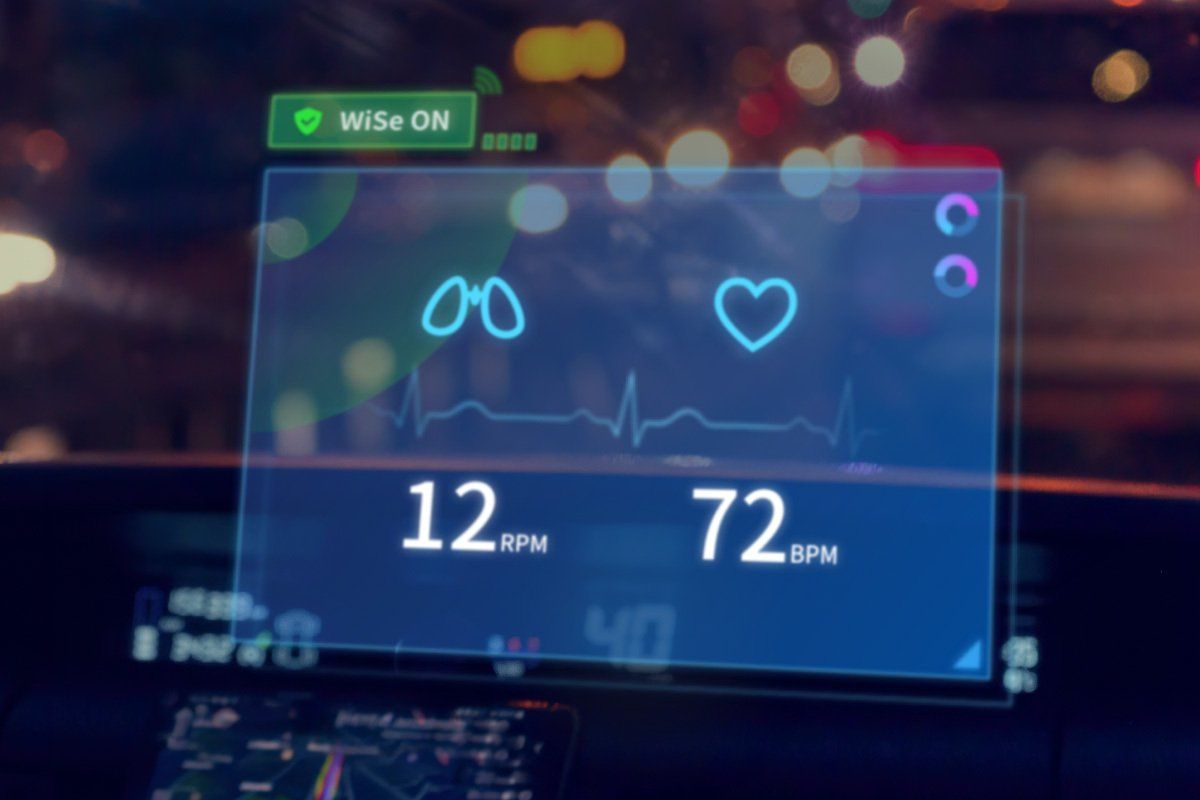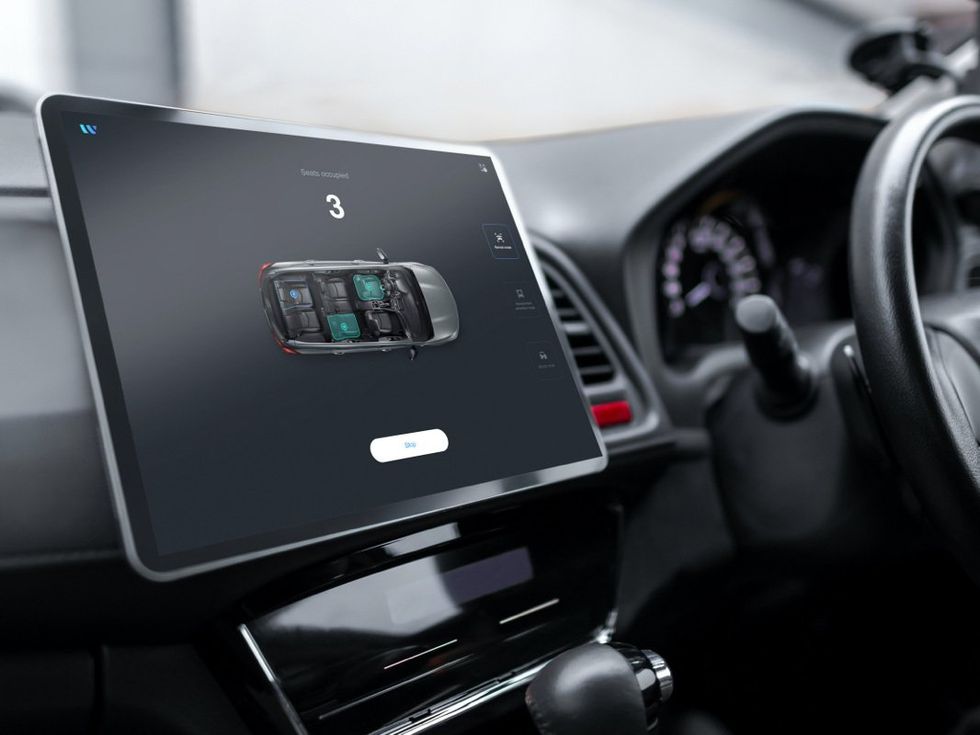Millimeter Wave Radar System Keeps Drivers Safe on the Road

A new sensor could help reduce the number of accidents caused by impaired driving and could protect children left in hot cars. The Wireless Intelligent Sensing millimeter-wave radar system, developed by startup Pontosense, monitors vehicle occupants' vital signs, and it can detect the presence of passengers in the vehicle and where they are seated.
The WISe system measures the driver's vital signs including heart rate and breathing to detect fatigue and possible medical emergencies. WISe sends out signals with wavelengths short enough to measure the tiny adjustments in a person's body from breathing and pulse. The signal echo is then analyzed by an artificial intelligence (AI) algorithm.
There is an urgent need for this kind of technology," says cofounder Alex S. Qi, the startup's CEO. A recent study on the causes of motor vehicle accidents found that fatigue and medical emergencies were the top reasons.
WISe is the first in-market millimeter-wave wireless sensor used for that purpose in the automotive industry, Qi says. The system is expected to be installed in several vehicle models in the near future, he says.
Monitoring drivers to make roads saferCurrent in-car driver-monitoring systems require either cameras or contact sensors, but WISe works wirelessly. The system uses RF sensing to capture echos of the micromovements made by the driver's or passenger's body caused by heartbeats and breaths. WISe detects changes in the reflected signal's phase-the relationship between radio signals that share the same space and frequency-to read the micromovements and vital signs.
Think of the sensor as bouncing waves off of something, like how whales and bats use sonar and echolocation to gauge where objects are located around them. That's the basis of our technology," Qi says.
About PontosenseFOUNDED
2021
HEADQUARTERS
Toronto
EMPLOYEES
120
The sensor transmits millimeter waves from an antenna designed by cofounder and CTO Yihong Qi (Alex and Yihong are related). When the waves are reflected back to the sensor, the received echo allows WISe to see" the small movements and gather data about the person's health status.
The system checks heart rate variability and respiration rate. WISe takes the driver's readings daily to discern what the person's normal range is and displays the data on the car's infotainment screen. The information is also stored in a microcomputer in the vehicle as well as external servers so it can be accessed later. The system is encrypted to protect the driver's personal data from hackers.
The sensors can be installed in different locations in the vehicle, including behind the rearview mirror, behind the instrument panel, and between the driver and passenger seats. The device-about the size of a coin, with a 40-millimeter diameter-uses less than 10 watts of power.
The antenna Yihong designed is 10 nanometers to keep the sensor small and flexible, he says. It can transmit millimeter waves at 24, 60, or 77 gigahertz, depending on the vehicle.
The wavelength at a higher frequency is very short," Yihong says, so the sensor is able to more accurately read the driver's movements."
The biggest challenge during the sensor's development, Yihong says, was figuring out how to filter out external noise to ensure accurate readings.
Take heart rate variability, for example," he says. In the hospital, when a patient is having their heart rate measured, sensors are directly attached to them for an accurate reading. But a contactless wireless sensor needs extra help because noises in the environment-such as seatbelts, the car's engine, and even breathing-are affecting the sensor's ability to differentiate between the person's heart rate and irrelevant noise."
To filter out the noise, Yihong developed signal processing software that uses AI to analyze the data. Algorithms clean up the data, generating a clear radar image for biometrics and communicating with the vehicle and the infotainment system if it suspects an issue with the driver or a passenger. The company says it takes 5 to 10 seconds for WISe to detect a change in the driver, such as an irregular heartbeat, and notify the vehicle.
Each car manufacturer will use a different system for alerting the driver if the measurements deviate from the norm, Alex says. It could involve setting off an alarm, slowing down the car or, for autonomous cars, safely pulling over to the side of the road.
The driver can override the system, the company says, if the alert is incorrect or unnecessary.
 WISe can detect the presence of passengers in the vehicle and where they are seated. Pontosense
WISe can detect the presence of passengers in the vehicle and where they are seated. Pontosense
The current way to count the number of passengers in a car is through pressure sensors installed under each seat. But sometimes a sensor is inaccurate because it was triggered by a heavy object such as luggage. Pressure sensors also can fail to count children weighing less than 29 kilograms, according to a 2020 article published in IEEE Access.
Compared with a pressure sensor, WISe can more accurately differentiate whether a passenger is an adult, child, or pet through vital signs and size.
Determining a passenger's size also matters for airbag deployment. After a crash, airbags eject out of the steering wheel, dashboard, or another location at about 27 kilometers per hour, according to the Insurance Institute for Highway Safety. People who weigh less than 68 kg or are shorter than 1.5 meters can be killed or severely injured because of the airbag's deployment speed, Alex says. But WISe can communicate to the car to slow down the bag's deployment by notifying the vehicle that a passenger doesn't meet the minimum requirements.
The system can also warn whether children or pets have been left in the rear seat by reading their vitals. That could prevent heat stroke or death for those left behind in a hot vehicle. WISe can tell the vehicle to open windows or turn on an alarm to notify those in the area of a forgotten child or pet while the car is not running.
In-cabin sensing will enable personalized, human-centered enhanced in-car experiences," Yihong says.
Developing a hyperintelligent wireless sensorThe idea for Pontosense came about while Yihong and Alex were walking the showroom floor at the 2019 Consumer Electronics Show in Las Vegas.
We saw many companies showcasing devices that could measure vital signs, but all needed two or more sensors to work, were invasive, and were not user-friendly," Alex says. They also relied on Wi-Fi."
Finding a Professional HomeYihong has been an IEEE member for more than 30 years. He joined in 1992 and is a member of the IEEE Electromagnetic Compatibility Society.
I've benefited a lot from joining IEEE," he says. The organization has a large, global network of talented engineers." Several of his IEEE colleagues helped him develop WISe, providing him with their expertise and referring him to IEEE journals they thought would help.
Yihong said he enjoys exchanging ideas with other members at IEEE conferences because he always learns something new.
The sensors used low-frequency bandwidth, which couldn't make accurate readings," Yihong adds. They only detected a person if they walked one meter out in front of the sensor, and they couldn't differentiate between multiple people in a group."
Yihong's work in antenna development, radio frequency and electromagnetic compatibility measurement, and digital signal processing algorithms spans decades. An IEEE Fellow, he holds more than 500 patents in China and the United States.
He started to think about how to make a more accurate, more user-friendly, wireless intelligent sensing device. By the time the trade show ended, he already had several ideas. The two decided to team up and develop a technology to be used in cars.
Both of us have experienced driving while tired, and we thought a sensor would be a great tool to help decrease the number of accidents caused by impaired driving," Alex says. He adds that they also wanted to reduce the number of deaths caused when people accidently leave a young child behind in a car on a hot day.
They succeeded in creating the wireless sensor in 2021 and founded Pontosense that year to bring the system to market. The startup, based in Toronto, employs more than 120 people, 25 of whom are on its research and development team.
Pontosense received an IEEE Hyper-Intelligence Technical Committee Award for Excellence in Hyper-Intelligence last year for contributions on wireless intelligent sensing systems for human safety in automobiles," in the industrial impact category.
Hyperintelligence uses interdisciplinary technologies that work together to accomplish complex tasks. The award is sponsored by the IEEE Sensors Council.
Benefiting from other technology startupsPontosense participated in VentureLab's capital investment program in 2021. The program helps participants write pitches, connect with investors, and develop long-term capital strategies. But raising funds wasn't difficult, Alex says, as Pontosense isn't his or Yihong's first company. They've founded several other startups, which helped pave the way for the development and manufacturing of the sensors. Their companies include wireless communication device manufacturers Mercku and General Test Systems.
We have the privilege to be able to mass-produce WISe with our network of companies," Alex says. Pontosense can produce hundreds of thousands of modules a month. Our goal for this year is to get the device in as many vehicles as possible so we can save as many lives as possible."